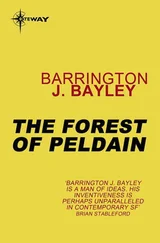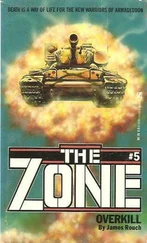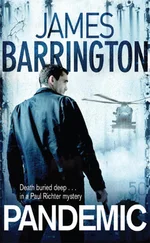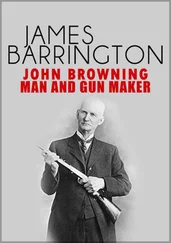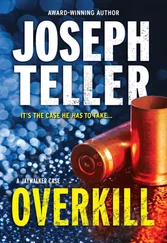‘Exactly.’
‘What happens if the escort cars don’t accelerate in front of the lorry?’ Dekker asked.
‘Then we’re back where we started,’ Richter said. ‘No worse off than before.’
Erulin spoke up. ‘I would like the two lorry drivers out of their cabs as soon as possible after they have stopped,’ he said. ‘They should be briefed to climb over the central reservation, cross the southbound carriageway and lie flat in the scrubland off the autoroute. I don’t want them in the firing line.’
Lacomte nodded. ‘Agreed. They’re wearing orange jackets, as you requested, so you can identify them.’
‘ La Veuve ,’ the radio operator said.
Lacomte noted the position on his map. ‘They’re now north-west of Châlons,’ he said.
‘So what do we use for our accident?’ asked Dekker.
‘How about your Transit?’ Richter suggested. ‘As long as the Queen wouldn’t mind.’
‘Hopefully,’ Dekker said, ‘she won’t find out.’
Richter turned to Lacomte. ‘How’s this? The lorries proceed as we’ve just discussed. Your vehicle can be positioned on the hard shoulder to the east of the ambush site, well out of the way, with the bonnet open as if you’ve had a breakdown. We position the SAS van at the ambush site, slewed sideways across the right-hand lane, so that it looks as if it’s been involved in an accident. Lieutenant Erulin’s Trafic can be parked on the hard shoulder just behind it, blue lights flashing. The hazard warning lights on both vehicles should be switched on, warning triangles displayed, and a line of cones placed so that traffic is forced into the outside lane.’ Richter paused. ‘Just a normal, daily, minor accident on the autoroute.’
‘That should work,’ said Lacomte. ‘Any criticisms or suggestions?’
‘Only one,’ Tony Herron said. ‘We won’t need the rescue vehicles or any of the other personnel we were going to use for the big accident, so I suggest you withdraw them. The less friendly bodies there are out there the better, in my opinion.’
Lacomte nodded, turned to the radio operators and began issuing detailed instructions as everyone else climbed out of the van. Dekker nodded to Erulin and they walked off together, still discussing their force dispositions. After a couple of minutes the SAS officer came back. ‘Right,’ he said. ‘I think we have agreement. Erulin will position seven of his men on this side of the autoroute, at about one-hundred-metre intervals, and the other three on the south side of the central reservation, closer to where we’ll park the Transit.’
Tony Herron interrupted. ‘Isn’t one hundred metres rather wide spacing?’ he asked.
‘I couldn’t agree more,’ Dekker said, ‘and if you can show me exactly where each of the vehicles is going to stop, we’ll tighten up the spacing. We’ve got to hedge our bets. By covering nearly one kilometre with that separation we’re hoping that we’ll have at least one sniper within about fifty metres of each vehicle. The plan is that, once the vehicles have stopped, the Gigènes personnel will close up into optimum positions.’
‘They’ll probably be seen when they move,’ Richter said.
‘A risk we have to take. What Erulin is hoping is that the convoy drivers will be looking ahead, at the two vans, and not into the scrubland beside the autoroute.’
Lacomte left the back of his van and walked over to them. ‘They’re approaching Reims,’ he said. ‘They passed the Aire de Reims-Champagne six minutes ago.’
Washington, D.C.
The Top Secret Joint Emergency Evacuation Plan, or JEEP, is an evacuation plan for selected personnel who live and work in Washington. As soon as the Secretary of Defense reached the Gold Room, he ordered JEEP Preps to begin.
Fifty-five minutes later the last of the designated Army and Air Force helicopters was in position at the Pentagon heliport and on the paved terrace between the Pentagon building and the Potomac River. JEEP cardholders are specially selected military officers and civilians who are capable of running the United States during and after a nuclear war. They are required to be on permanent stand-by and in peacetime hold regular exercises to ensure that they can always get themselves to their designated collection points. There are two categories of JEEP cardholders – One and Two – reflecting the relative importance of the individuals concerned.
The first group of forty-four elite men and women, the government officials, scientists and technicians who held JEEP-1 cards, was airborne thirty minutes later. Some went to the Alternate Emergency Command Center in Raven Rock, also known as SITE R; others to the civilian government emergency bunker, known as the Special Facility, in Mount Weather in northern Virginia.
Four hours later, all but four JEEP cardholders had been flown to their assigned locations. Fifty-nine were at the Special Facility at Mount Weather, and one hundred and ninety-four had arrived at SITE R in Raven Rock. The remaining four cardholders were from the Federal Emergency Management Agency, the government civil defence agency, and were still en route to the civil defence National Warning Center at Olney in Maryland.
Autoroute A26, vicinity of Couvron-et-Aumencourt, France
‘What about Trooper Jones?’ Richter asked. ‘Where is he going to be crouching with his wad of plastic and his Arwen?’
Colin Dekker shrugged. ‘Flip a coin,’ he said. ‘That bloody lorry could stop anywhere in about a five-hundred-metre length of autoroute. He’ll just have to do a bit of sprinting.’
Richter shook his head. ‘Not necessarily. I can tell you where it’s going to stop.’
‘How?’ Dekker asked.
‘Easy,’ Richter said. ‘Borrow one of Erulin’s snipers and tell him to take out one of the truck’s tyres as it approaches, preferably one of the twin tyres on the tug – we don’t want it to crash. If the driver’s any good it should be stationary in under eighty metres.’
The rear door of the light blue van opened and one of the radio operators gestured to Lacomte. He walked over, listened a moment, and then returned. ‘Reims,’ he said. ‘Now we just have to wait for them to make the turn off the A4 and onto autoroute A26. After that, there’s really nowhere for them to go but here.’
Dekker and Erulin summoned their men and ran through the briefing one final time, then ordered them to suit-up. They donned bullet-proof Kevlar waistcoats under their combat jackets and checked their weapons and ammunition packs. Finally, they retuned their personal radios to a frequency specified by Lacomte, which would allow direct communication between all personnel and the radio van. That done, they sat down on the grass beside the hard shoulder, waiting for the go signal.
Richter and Westwood walked over to Lacomte’s van, and reached it just as he opened the rear door. ‘They’ve passed La Neuvilette,’ the Frenchman said. ‘They’ve made the turn, and I estimate arrival here in about thirty-five minutes.’
‘Right,’ Richter said, and walked over to tell Colin Dekker.
‘How soon do we move?’
‘Lieutenant Erulin can deploy his men as soon as he likes,’ Richter replied, ‘and so can you, but don’t position the Transit until the convoy’s about ten minutes away.’
‘Understood,’ Dekker said, and began issuing orders.
A long ten minutes passed before Lacomte’s radioman announced that the convoy had passed the Vallée de l’Aisne junction. That would be the last check until the vehicles passed under the D977, just to the east of Laon, and just minutes after that they would be on them.
‘Close the autoroute,’ Lacomte ordered, and Richter relayed the news to Dekker and Erulin, who were still waiting beside the Transit. Lacomte had emerged from the rear of his vehicle, and was walking over towards Richter when the radioman shouted. He doubled back quickly and listened intently to the message.
Читать дальше





